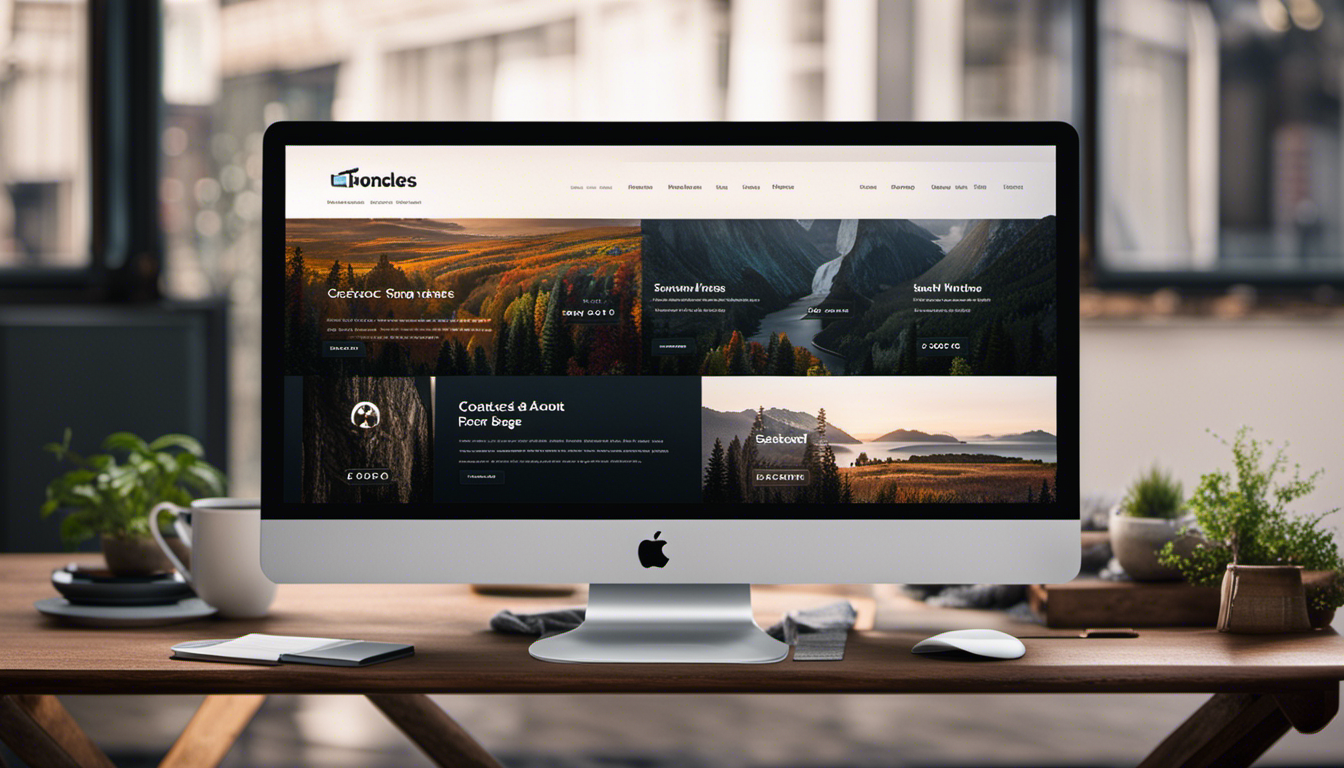Are you tired of getting lost on websites? Navigating through webpages can be a daunting task, but fear not! The guide to HTML links is here to rescue you.
With the help of a tags, you’ll be able to effortlessly move from one page to another, or even within the same webpage. This comprehensive guide will teach you everything you need to know about creating hyperlinks, linking to external webpages, and even adding images as links.
Get ready to become a master of page navigation!
Key Takeaways
- HTML links are created using the a tags.
- Anchor tags allow you to link to other web pages, sections within the same page, or email addresses.
- Descriptive anchor text should be used to provide context and improve accessibility.
- tags can be used to link to downloadable files.
Understanding the Basics of HTML Links
You’ll need to understand the basics of HTML links in order to navigate through different pages using the <a> tags. Anchor tags, denoted by the <a> element, are an essential part of creating hyperlinks in HTML. These tags allow you to link to other web pages, sections within the same page, or even email addresses.
To create a basic hyperlink, you’ll need to specify the destination URL or email address within the href attribute of the <a> tag. For example, <a href='https://www.example.com'>Click here</a> creates a hyperlink that, when clicked, will take the user to the specified URL. Similarly, you can link to an email address by using the mailto: protocol followed by the email address in the href attribute.
Understanding anchor tags and linking to email addresses is just the beginning of utilizing HTML links effectively. In the next section, we’ll explore how to create more complex hyperlinks using the <a> tags without writing a step.
Creating Hyperlinks with Tags
Start by using the a tags to create hyperlinks for easy website navigation. Hyperlinks are an essential part of any website as they allow users to move between different pages and sections effortlessly.
To create a hyperlink, you need to use the tag, which stands for anchor. Within the opening and closing tags, you will place the destination URL for the link. This URL can either be a relative path to another page within your website or an absolute URL linking to an external webpage.
In addition to linking to webpages, tags can also be used to link to downloadable files such as PDFs, images, or documents. Simply specify the file’s location within the href attribute of the tag, and when users click on the link, their browser will prompt them to download the file.
When creating hyperlinks, it is important to follow best practices for hyperlink accessibility. This includes using descriptive anchor text that accurately describes the destination page or file. Avoid using generic terms like ‘click here’ or ‘read more’ as they are not informative for screen readers or users who have disabled images. Instead, use descriptive text that gives users a clear idea of what to expect when they click on the link.
Now that you understand how to create basic hyperlinks, let’s move on to linking to external webpages.
Linking to External Webpages
To link to external webpages, simply use the tag and specify the destination URL within the href attribute. This allows users to click on the link and be redirected to the external webpage.
It’s important to note that when linking to external webpages, you can also use the target=’_blank’ attribute. This attribute opens the linked webpage in a new browser tab or window, providing a better user experience as it allows users to easily navigate back to your website.
When creating external links, it’s crucial to optimize the anchor text. This is the visible text that users click on to access the external webpage. It’s recommended to use descriptive and relevant anchor text that accurately represents the content of the linked webpage. This not only helps users understand where the link will take them, but it also improves search engine optimization by providing context to search engines.
Now that you know how to link to external webpages, let’s explore how to navigate within the same webpage.
Navigating Within the Same Webpage
Now that we’ve covered linking to external webpages, let’s move on to navigating within the same webpage.
When you want to create a link that takes you to a different section of the same webpage, you can use anchor tags. These anchor tags allow users to scroll to specific parts of the webpage with a simple click.
Here are five things you need to know about navigating within the same webpage using anchor tags:
- Anchor tags are created using the element in HTML.
- To create an anchor tag, you need to define an id attribute for the element you want to link to.
- The href attribute in the anchor tag should include the id of the element you want to link to, preceded by a hash (#) symbol.
- When the link is clicked, the webpage will scroll to the section with the specified id.
- You can place the anchor tag at the top of the section you want to link to or anywhere within the section.
Navigating within the same webpage using anchor tags is a handy technique that provides a smooth scrolling behavior for users. It allows them to easily jump to different sections of the webpage without the need for excessive scrolling.
In the next section, we will explore how to link to specific sections on a page without writing a step.
Linking to Specific Sections on a Page
Once you have created anchor tags, you can easily link to specific sections on a page by defining the id attribute for the element you want to link to and using the href attribute with the corresponding id preceded by a hashtag. This allows you to create a scrolling animation that smoothly takes you to the desired section when the link is clicked.
Anchor tags play a crucial role in this process as they serve as the markers for the different sections on the page.
To link to a specific section, you first need to assign an id to the element you want to link to. For example, if you have a section with the id ‘about’, you can create a link to it by using the anchor tag with href=’#about’. When this link is clicked, the browser will automatically scroll to the section with the id ‘about’, creating a smooth scrolling animation.
Now, let’s move on to the next section where you will learn about adding images as links.
Adding Images as Links
Adding images as links is a simple way to enhance the visual appeal of your website. By incorporating images into your links, you can make them more eye-catching and engaging for your visitors.
One of the main benefits of using images as links is that they can provide a preview of the content that the link leads to. This can help users quickly understand what they will find on the other side of the link and encourage them to click through.
Additionally, images can convey information or convey emotions more effectively than text alone. For example, if you are linking to a product page, using an image of the product as the link can give users a better idea of what they can expect to find.
It is important to choose images that are relevant to the content of the link and that are clear and visually appealing. By incorporating images as links, you can make your website more visually appealing and improve the user experience.
In the subsequent section about styling and customizing your links, you will learn how to further enhance the appearance of your links.
Styling and Customizing Your Links
To enhance the appearance of your website, you can easily customize and style your links. HTML provides various styling options to make your links stand out and attract attention. One of the simplest ways to customize your links is by changing their color. You can use the CSS color property to specify the desired color for your links.
Additionally, you can also change the text decoration of your links, such as underlining or removing it altogether. CSS offers a text-decoration property for this purpose.
Another way to style your links is by applying link hover effects. These effects allow you to change the appearance of your links when a user hovers over them with the mouse cursor. Common hover effects include changing the color, adding an underline, or applying a background color to the link. You can achieve this by using the CSS :hover pseudo-class along with the desired CSS properties.
By customizing and styling your links, you can create a visually appealing and professional-looking website. Experiment with different colors, text decorations, and hover effects to find the style that best suits your website’s design and overall aesthetic.
Remember, a well-styled link can greatly enhance the user experience and make navigation more engaging.
Conclusion
In conclusion, mastering the art of HTML links is like having a superpower in the world of web development. With just a few lines of code, you can effortlessly navigate through webpages, link to external sites, and even direct users to specific sections on a page.
The possibilities are endless! So go ahead and unleash your inner web wizard, and watch as your websites come alive with seamless navigation and visually stunning links.
Get ready to amaze your audience like never before!







